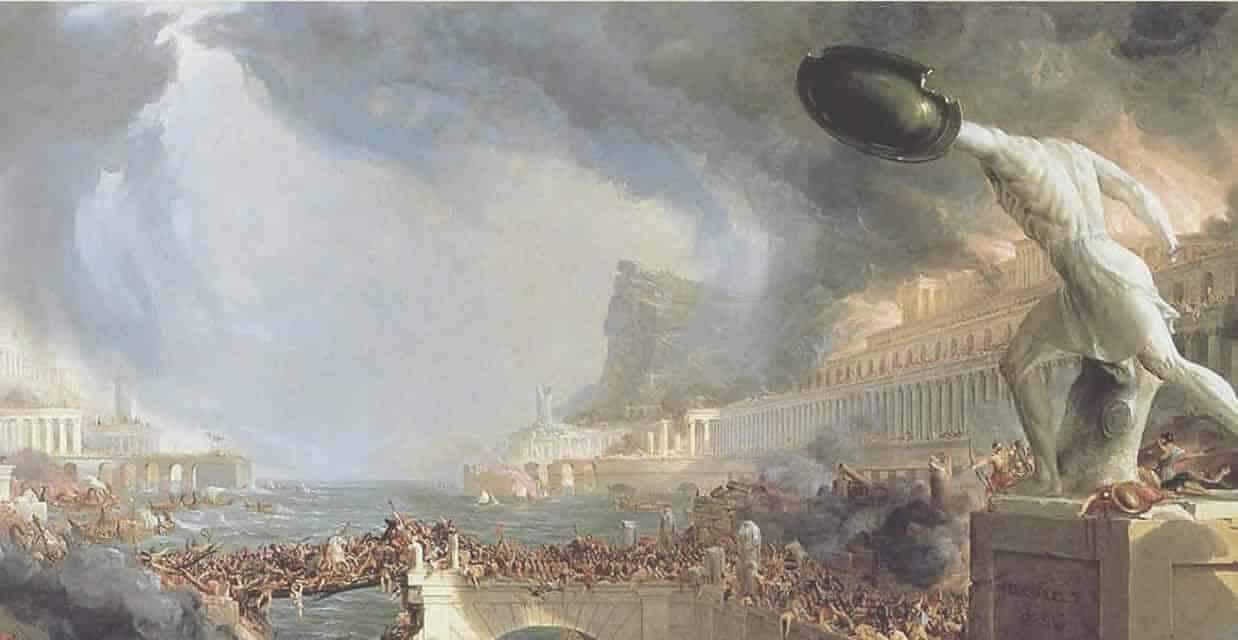The bare facts about the fall of the Western Roman Empire and the continuation of the Eastern Roman Empire (which I will refer to as the Byzantine Empire at varying times during the article) are known by those with even a passing interest in ancient history. In September 476, Romulus Augustus was deposed by Odoacer as Rome officially ‘fell.’ Meanwhile, Zeno ruled what proved to be a long-lasting empire in the east as he managed to regain the crown from the usurper Basiliscus.
In reality, the year 476 is not as epoch-making as was once believed. The Western Empire had arguably been on the verge of collapse for the previous two years; it probably would have ended in the midst of the Third Century Crisis had it not been for the military brilliance of Emperor Aurelian. The Sack of Rome in 410 by Alaric was the beginning of the end in the West, a fate arguably sealed by the official division between East and West in 395 when Theodosius’ sons, Honorius and Arcadius, inherited the Western and Eastern Empires respectively.
As the West was the weaker part of the empire, its collapse was inevitable once the separation became official. When considering the reasons for the demise of the Western Empire, it is easy to simply say ‘barbarians’ and be done with it. Of course, the pressure exerted by Huns, Vandals, and Goths played a role, but the East faced similar threats and survived. In this article, I will look at 10 reasons why the Western Empire ended while the Eastern Empire survived and thrived for centuries.

1 – Leadership
There was nothing remarkable about the emperors of the Eastern Empire during the fourth, fifth and early sixth centuries, but they were competent at least and also benefited from continuity of sorts. After the death of Theodosius I, who ruled the entire empire, in 395, the West had at least 14 emperors up to the point of Romulus Augustus’ deposition. In contrast, there were only seven in the East. Critically, at least eight Western emperors were murdered while the same fate befell only the usurper Basiliscus in the East.
The main reason for this stability in the East was a clear pattern of succession. In the West, emperors were beholden to the military. Indeed, every emperor after Valentinian III’s murder in 455 was installed by the army; and all but Olybrius were deposed. Ricimer and Gundovald, the so-called Masters of Soldiers (magistri militum), killed at least five of these pretend emperors in a 17-year spell. While the West allowed generals to decide the administration of the empire, it was civil officials who ruled the roost in the East; and these individuals were clearly more qualified to rule a kingdom.
Theodosius II was the Eastern Emperor for over 42 years, and while he is classified as ‘lazy’ by many historians, he did manage to place some distance between his empire and the crumbling ruins of the West. The Eastern emperors successfully handled military threats to their crown. Leo I ‘the Thracian’ for example, killed general Aspar in 471 after the German tried to take control of the empire. Zeno was briefly dethroned by Basiliscus in January 475 but regained his empire within 19 months and murdered the usurper, along with his wife and son.
The Eastern Roman Emperors were typically men of action. Even if their decisions were not always the right ones, at least they were able to see the threat and act upon it. Western Emperors such as Honorius were completely ineffectual. Rather than take on Alaric, he decided upon the ‘strategy’ of doing nothing. A. Ferrill says that Honorius doesn’t deserve the criticism he gets and claims the emperor’s passivity would have worked had someone not opened the gates of Rome to the Visigoths in 410. In reality, the threats the West faced in the fifth century meant they needed a brilliant leader but Majorian aside, no competent ruler ever sat on the throne. Better leadership against the imminent danger also had an impact on the respective wealth of East and West.

